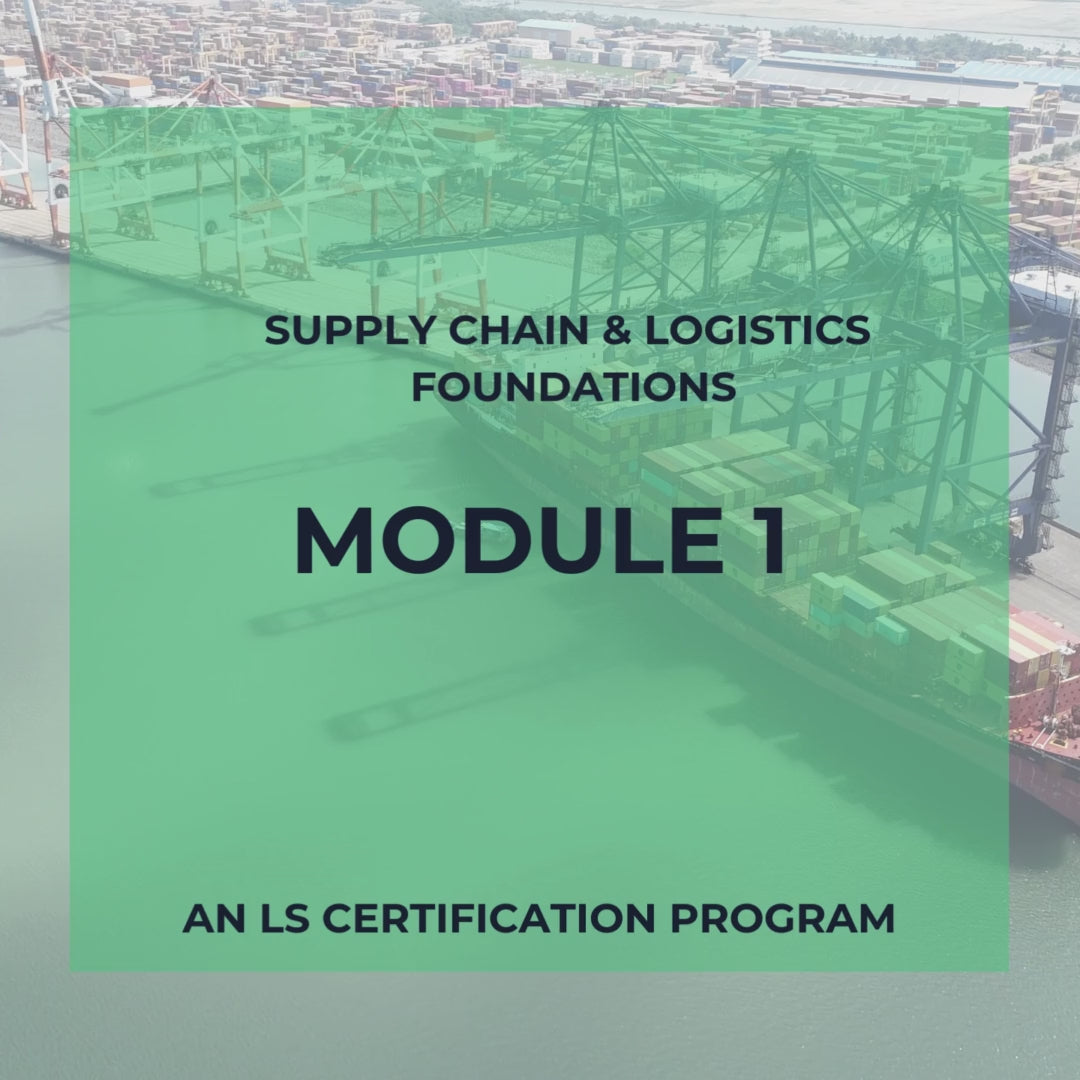Integrated Logistics Networks
Supply Chain & Logistics Foundations | Module 1
Online Supply Chain & Logistics Training Program
Behind every product on a shelf or package at your door is a complex system of decisions, people, and processes working together. That system is the integrated logistics network — the way supply chains connect forecasting, production, distribution, and customer service into one coordinated flow.
In this module, you’ll explore the fundamentals of logistics networks and supply chain operations. You’ll see what drives efficiency, learn how to align demand with production, and discover how logistics decisions impact both costs and customer service.
By the end of the module, you’ll have both the big-picture understanding of integrated logistics networks and the practical tools to improve logistics performance in your own role.
Watch video below or jump to Module Overview.

The Logistics Institute
1. Integrated Logistics Networks
Skills & Topics Covered
- Understand how supply chains work and what drives efficiency in logistics
- Learn forecasting methods to connect demand, production, and inventory
- Explore distribution channels and how they keep products flowing smoothly
- Apply continuous improvement tools (flowcharts, Pareto, fishbone diagrams) to logistics challenges
- Make cost-aware decisions with supply chain costing methods
- Track and improve service quality using logistics KPIs
- Balance trade-offs between cost, speed, and customer service
| Topics | |
|---|---|
| 1. DISTRIBUTION CHANNELS | channel structures, intermediaries, direct/indirect channels, evaluation and performance |
| 2. ALTERNATIVE COSTED NETWORK | ABC customer analysis, transportation networks, alternative networks, network design options |
| 3. MODELING | modeling strategies, costing trade-offs, auditing, network design process |
| 4. ACTIVITY-BASED COSTING | principles of ABC, benefits of ABC, examples of ABC, ABC Product Costing, ABC Inventory Analysis |
| 5. FORECASTING | principles of forecasting, implementing the forecast, selecting a forecast method, evaluating forecasting models |
| 6. DEMAND MANAGEMENT | principles of demand forecasting, quantitative forecasts, demand forecasting & production planning integration, sales forecasting & production planning integration |
| 7. RETOOLING THE NETWORK | logistics network design, networking modeling tools, process flow |
| 8. CONTINUOUS IMPROVEMENT | the role of logistics, flowchart of CI process, pareto chart, fishbone diagrams, value added analysis |
| 9. VALUE CREATION PROGRAMS | value perception, service quality, service quality model gaps, monitoring service quality, key performance indicators |
| 10. CHANNEL MANAGEMENT | supply chain strategies, channel leadership, channel management process |
LS CERTIFICATION
This is one of three modules in the Supply Chain & Logistics Foundations Certification Program to earn the LS designation.